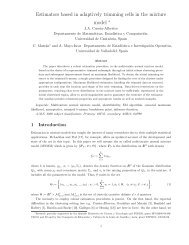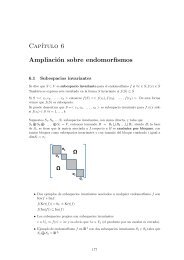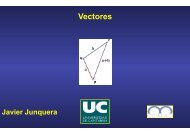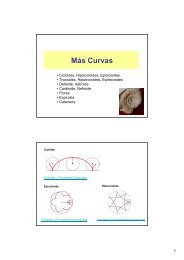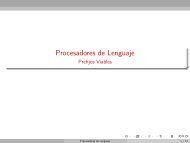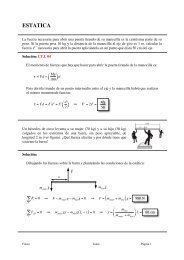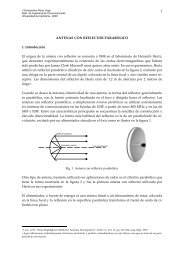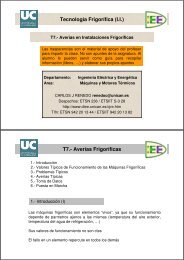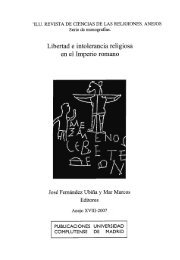Create successful ePaper yourself
Turn your PDF publications into a flip-book with our unique Google optimized e-Paper software.
T2.- Carga Térmica <strong>de</strong> <strong>Refrigeración</strong><br />
3.- Transmisión <strong>de</strong> Calor (XVII)<br />
Flujos paralelos o en equicorriente; y contracorriente<br />
A partir <strong>de</strong> este punto es imposible realizar<br />
más intercambio térmico, t 11 = t 22<br />
Teóricamente la temperatura <strong>de</strong> salida <strong>de</strong> un fluido pue<strong>de</strong><br />
igualar con la <strong>de</strong> entrada <strong>de</strong>l otro, t 11 = t 22 y/o t 12 = t 21<br />
Temperaturas características, limitan la posibilidad <strong>de</strong> intercambio térmico:<br />
– La temperatura <strong>de</strong> entrada <strong>de</strong>l fluido caliente, t 11 en ºC<br />
– La temperatura <strong>de</strong> salida <strong>de</strong>l fluido caliente, t 12 en ºC<br />
– La temperatura <strong>de</strong> entrada <strong>de</strong>l fluido frío, t 21 en ºC<br />
– La temperatura <strong>de</strong> salida <strong>de</strong>l fluido frío, t 22 en ºC<br />
T2.- Carga Térmica <strong>de</strong> <strong>Refrigeración</strong><br />
3.- Transmisión <strong>de</strong> Calor (XVIII)<br />
Caudales caliente y frío, q 1 y q 2 en m 3 /s<br />
Masas caliente y fría, m 1 y m 2 en kg/s<br />
La <strong>de</strong>nsidad <strong>de</strong> los fluidos, ρ 1 y ρ 2 en kg/m 3<br />
El calor específico <strong>de</strong> los fluidos caliente y frío, c p1 y c p2 en W/kg ºC<br />
La capacidad calorífica <strong>de</strong> los fluidos caliente y frío, C 1 y C 2 en W/ºC, es el<br />
producto <strong>de</strong> masas por el calor específico<br />
La transferencia <strong>de</strong> calor por unidad <strong>de</strong> tiempo se utilizan las expresiones:<br />
(sin pérdidas térmicas)<br />
PT = qm1<br />
cp1<br />
( t11<br />
− t12<br />
) = qm2<br />
cp2<br />
( t22<br />
− t21)<br />
= k A ∆t<br />
∆t la diferencia <strong>de</strong> T entre el fluido caliente y el frío a lo largo <strong>de</strong> la pared<br />
Pérdida <strong>de</strong> presión



